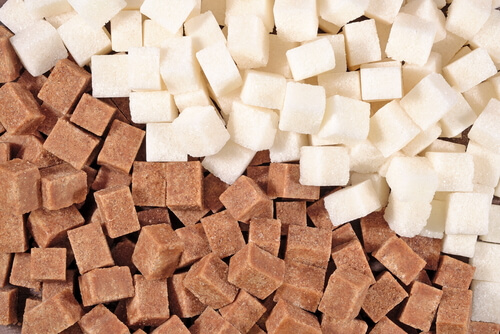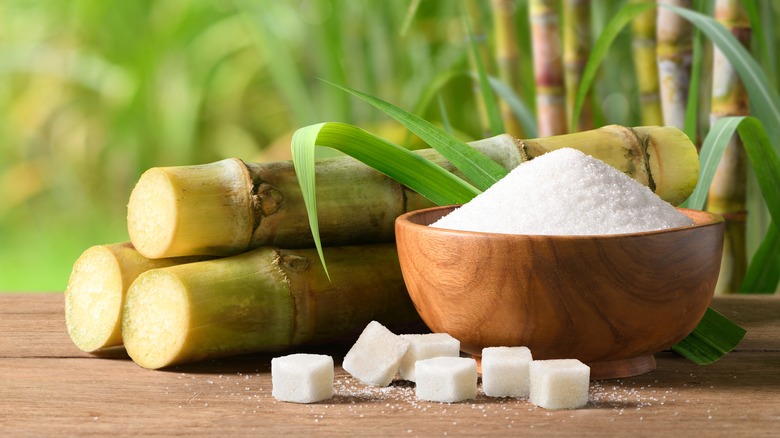Discover the Uses and Conveniences of Beet Sugar Vs Cane Sugar in Your Daily Diet
Exploring the distinct high qualities of beet and cane sugar discloses even more than just their sweetening capabilities; it highlights their special impacts on health and cookeries. Beet sugar, known for its refined flavor, is typically preferred in delicate desserts, whereas cane sugar, with its tip of molasses, includes splendor to robust recipes. Each type holds its very own dietary profile and glycemic implications, inviting a much deeper understanding of their functions in a balanced diet regimen and sustainable usage practices.
Beginning and Production Processes of Beet and Cane Sugar

The unique environments and soil types needed for growing sugar beets and sugarcane add to distinctions in their growing techniques and geographic circulation, influencing the economics and sustainability of their manufacturing. beet sugar vs cane sugar.
Nutritional Contrast Between Beet Sugar and Cane Sugar
In spite of stemming from different plants, beet sugar and cane sugar are nutritionally really comparable, both primarily including sucrose. Each gives concerning 4 calories per gram, equating to roughly 16 calories per tsp. Structurally, both sugars are composed of around 99.95% sucrose, with very little quantities of various other compounds like wetness and trace element, which do not considerably alter their dietary accounts.

Inevitably, when choosing in between beet sugar and cane sugar based on nutritional content alone, both offer identical advantages and disadvantages as they are essentially forms of the same particle-- sucrose, offering fast power without other nutrients.
Effect on Wellness: Glycemic Index and Caloric Material
Exploring even more into the impacts of beet sugar and cane sugar on health, it is very important to consider their glycemic index and calorie content. Both sugars are classified as sucrose, which includes sugar and fructose. This composition leads them to have a comparable influence on blood sugar level degrees. The glycemic index (GI) of both beet and cane sugar is around 65, categorizing them as high-GI foods, which can create fast spikes in blood sugar levels. This is an important facet for individuals managing diabetes mellitus or those attempting to maintain their energy degrees throughout the day.
Each sort of sugar contains around 4 calories per Visit Website gram, making their calorie content matching. For those keeping an eye on caloric intake, particularly when taking care of weight get redirected here or metabolic wellness problems, understanding this equivalence is crucial (beet sugar vs cane sugar). Extreme intake of any type of high-calorie, high-GI food can contribute to wellness problems such as obesity, heart condition, and insulin resistance.
Environmental and Economic Considerations of Sugar Manufacturing
Beyond health effects, the manufacturing of beet and cane sugar additionally increases significant ecological and economic problems. Sugar beet cultivation often tends to need cooler climates and has a reduced geographical footprint contrasted to sugar cane, which thrives in tropical areas.
Additionally, the usage of chemicals and fertilizers in both beet and cane sugar growing can result in dirt degradation and pollution, further influencing biodiversity and regional water bodies (beet sugar vs cane sugar). The choice between cultivating sugar beet or cane frequently pivots on neighborhood environmental conditions and economic elements, making the sustainability of sugar production a complex problem
Culinary Applications and Taste Differences
While the environmental and economic elements of sugar production are without a doubt substantial, the choice between beet and cane sugar likewise influences cooking applications and taste profiles. Beet sugar, originated from the sugar beet plant, is recognized for its extremely neutral preference. This makes it a versatile component in cooking, where it does not change the taste of other elements. It dissolves promptly and is optimal for use in cakes, cookies, and breads.
Walking stick sugar, removed from sugarcane, usually preserves molasses traces, which present a distinct splendor and deepness. The slight variant in wetness content in between beet and cane sugar can impact the texture and consistency of meals, making cane sugar a preferred selection for details recipes that benefit from its unique homes.

Verdict
In final thought, both beet and cane sugar have unique origins and manufacturing procedures, using similar dietary profiles with minor differences in salt web content and taste. While their influence on wellness, specifically pertaining to glycemic index and calories, is equivalent, the selection between them frequently boils down to environmental, economic elements, and specific culinary requirements. Comprehending these elements can direct click site customers in making informed decisions that align with their health and wellness objectives and taste choices.